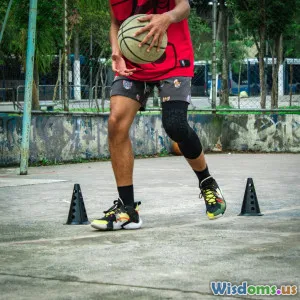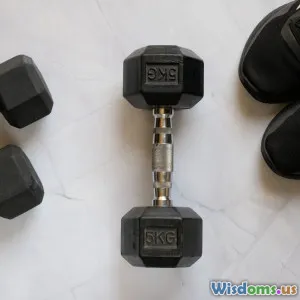
Top Five Resistance Band Exercises for Swimmers
15 min read Discover the top five resistance band exercises designed to help swimmers improve strength, flexibility, and performance in and out of the pool. (0 Reviews)
Top Five Resistance Band Exercises for Swimmers
Swimming demands powerful muscles, joint flexibility, and exceptional endurance. But even the most dedicated athletes sometimes overlook dryland training, an essential aspect that can elevate aquatic performance. Resistance bands have emerged as a game-changer for swimmers seeking strength improvements, injury prevention, and sport-specific conditioning—without the need for heavy gym equipment. Let's dive into the top five resistance band exercises every swimmer should incorporate into their training routine.
Band Pull-Aparts: Building the Upper Back and Shoulder Stability
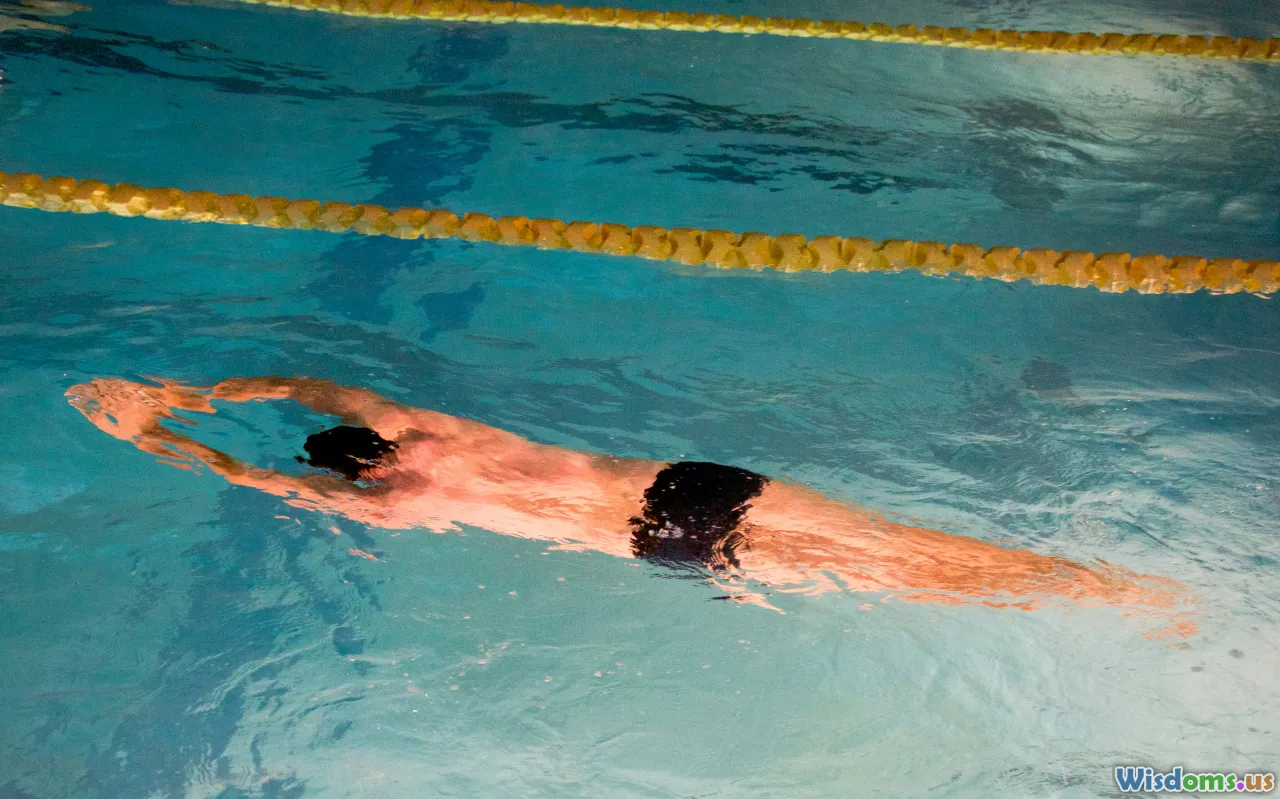
Shoulder injuries are unfortunately common in swimming, given the repetitive overhead motion inherent to each stroke. Band pull-aparts are a tried-and-true exercise designed to target the upper back and posterior shoulders—the very muscles that stabilize the shoulder joint.
How to Perform:
- Stand tall with feet shoulder-width apart, holding a resistance band with both hands at shoulder height.
- Keeping arms straight, slowly pull the band apart, squeezing the shoulder blades together.
- Pause briefly when your hands are wide, then slowly return to the starting position.
- Aim for 2–3 sets of 12–15 repetitions, focusing on control rather than speed.
Why it Matters:
- Improved Posture: Strong upper-back muscles promote good posture in and out of the pool.
- Shoulder Protection: Strengthens the rotator cuff and scapular stabilizers, reducing the risk of shoulder impingements—a notorious injury among swimmers.
Pro Tip: Use a light to medium resistance at first. Excessive tension can encourage compensatory motion and undermine your form. Over time, increase resistance by using thicker bands or pausing longer in the peak contraction.
Example: Olympic gold medalist Missy Franklin incorporated band pull-aparts as part of her pre-pool warmup for injury prevention.
Single-Arm Lat Pulldown: Mimicking the Pull Phase
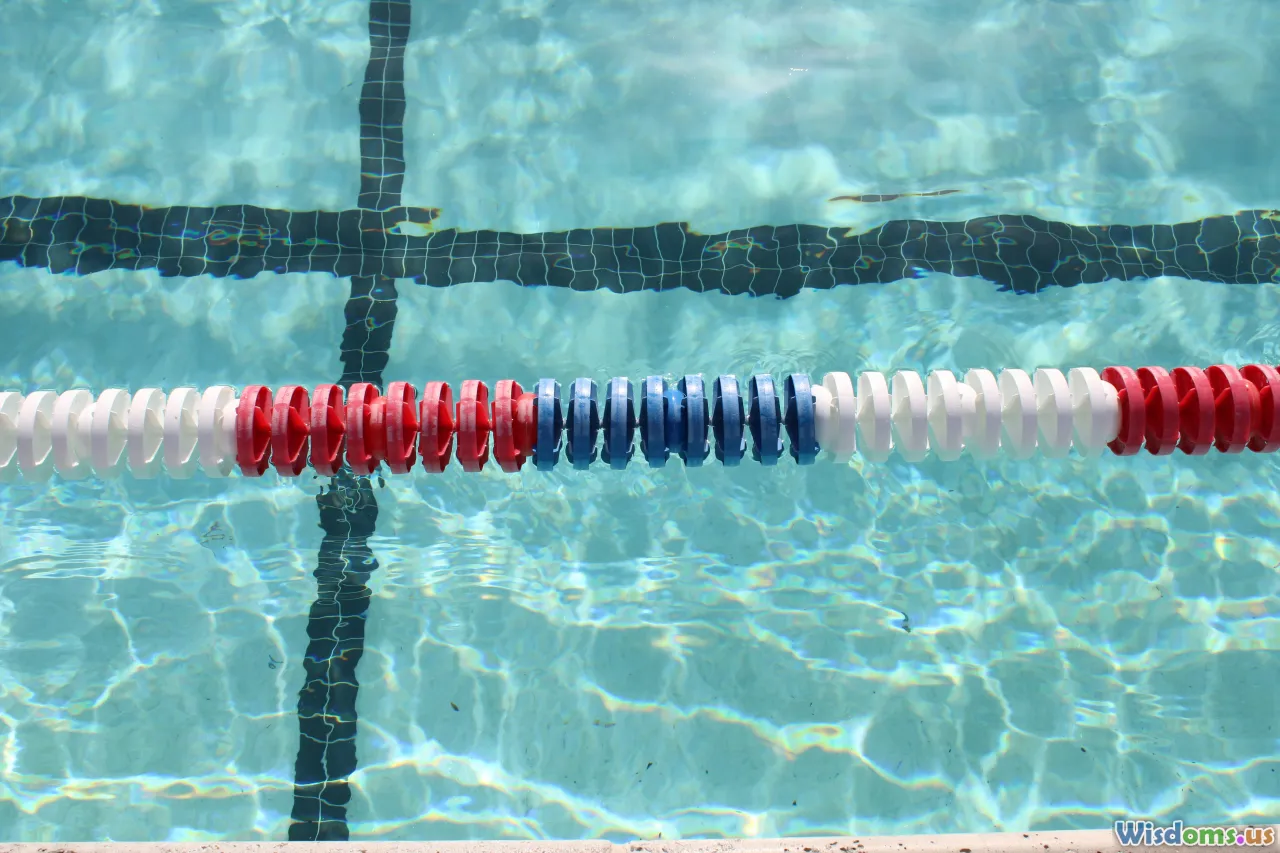
The latissimus dorsi ("lats") are the primary movers during the pull phase of freestyle and backstroke. The single-arm lat pulldown with a resistance band closely simulates this critical in-water movement, making it a must-do for swimmers focused on generating power and efficiency.
How to Perform:
- Anchor a resistance band overhead (such as over a closed door or pull-up bar).
- Grasp the band with one hand, stand back to create slight tension, and initiate a pull-down motion.
- Keep your elbow close to your body, bringing your hand toward your ribcage just like the underwater pull.
- Slowly return to the starting position, preserving constant tension.
- Complete 2–3 sets of 10–12 reps per arm.
Benefits:
- Functional Strength Development: Replicates the swimmer’s catch and pull, directly translating to pool performance.
- Muscular Balance: Isolating each arm corrects imbalances, which is crucial for symmetrical swimming technique.
Tip: Envision the underwater stroke as you execute the movement. Engaging the movement pattern out of the water reinforces neural pathways, enhancing stroke efficiency in the pool.
Application: Age-group and collegiate swim programs often include this exercise as it helps young athletes internalize correct pulling mechanics.
Overhead Band Extensions: Strengthening the Triceps for Powerful Finishes
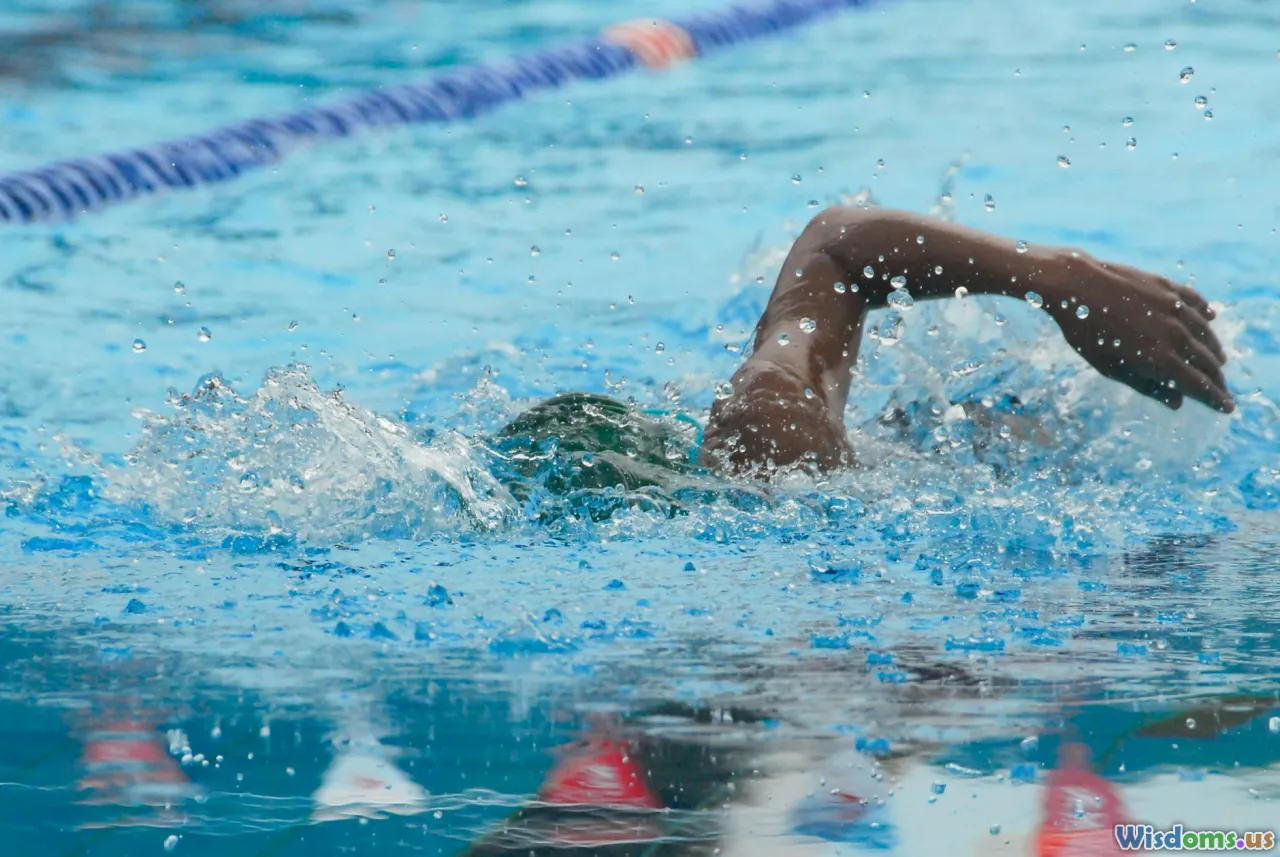
A swimmer’s triceps drive the final segment of each stroke, propelling you forward and turning a decent lap into a great one. Overhead extensions with a resistance band canopy the triceps’ strength, crucial for that explosive finish.
How to Perform:
- Stand with one foot on the center of the band.
- Grasp both ends of the band, bring your hands overhead, and keep elbows close to your ears.
- Extend your arms upward, stretching the band and contracting your triceps.
- Slowly lower back behind your head until the elbows reach a 90-degree angle.
- Repeat for 2–3 sets of 10–15 reps.
Why This Exercise Works:
- Maximized Stroke Propulsion: Stronger triceps mean more force at the end of every stroke.
- Joint Health: Unlike some weight-based tricep exercises, bands allow for variable resistance and less stress on the elbow joint.
Expert Insight: U.S. Olympic team trainers favor resistance band extensions in pre-meet routines, noting the reduction in elbow strain compared to classic dumbbell extensions.
Quick Advice: Maintain a neutral spine and avoid arching your back during the extension. This safeguards your lower back and places the workload solely on the triceps.
Band Squats: Powering Explosive Push-Offs and Starts

Though often overlooked compared to arm-centric dryland exercises, swimmers rely heavily on leg power. From push-offs at each wall to explosive race starts, your quadriceps, glutes, and hamstrings provide essential propulsion.
How to Perform:
- Stand on a resistance band with feet just outside shoulder-width apart. Hold the ends at shoulder height, so the band is taut.
- Lower into a squat, keeping the chest upright and knees behind toes.
- Return powerfully to standing, driving through the heels while maintaining resistance across the band.
- Perform 2–3 sets of 12–15 repetitions.
Swimming Connection:
- Turn and Start Power: Strengthens the primary leg muscles used in wall push-offs and block starts, elevating your breakouts.
- Core and Balance: Unlike machine-based squats, band squats require stabilizer activation, transferring to better control in underwater kicks.
Research Note: A 2021 study in the "Journal of Strength and Conditioning Research" found that incorporating banded squats improved jump performance and leg extensor strength in competitive swimmers, underscoring their efficacy.
Variation: For added intensity, incorporate a jump at the upward phase of the squat—mirroring a swim start’s explosive action.
Rotational Band Press: Developing Core Torque for All Strokes

Swimming is as much about generating rotation and torque as it is about straight-line speed. Rock-solid core stability and strength fuel every stroke’s streamlined rotation, especially in freestyle and backstroke. The rotational band press is a dynamic move that challenges core integrity while building upper body power.
How to Perform:
- Anchor a resistance band at chest height to a stable object beside you.
- Stand side-on to the anchor, holding the band with both hands at your chest.
- Press the band straight out in front, resisting the twisting pull of the band.
- Hold for 2–3 seconds, then slowly bring hands back toward your chest.
- Complete 2–3 sets of 10–12 presses per side.
Functionality:
- Core Activation: Engages the obliques, rectus abdominis, and lower back—the pillars of rotational strength in the water.
- Transferable Torque: Promotes effective hip and trunk rotation, which augments stroke efficiency and speed.
Coaching Tip: Elite coaches encourage variation: try holding the outstretched position statically (isometric hold) or incorporating a pulsing motion to mimic the trunk twist during strokes.
Case Insight: Triathlon swimmers integrating rotational band presses report reduced lower back pain and greater midline stability during long open-water swims.
Tips for Effective Resistance Band Workouts
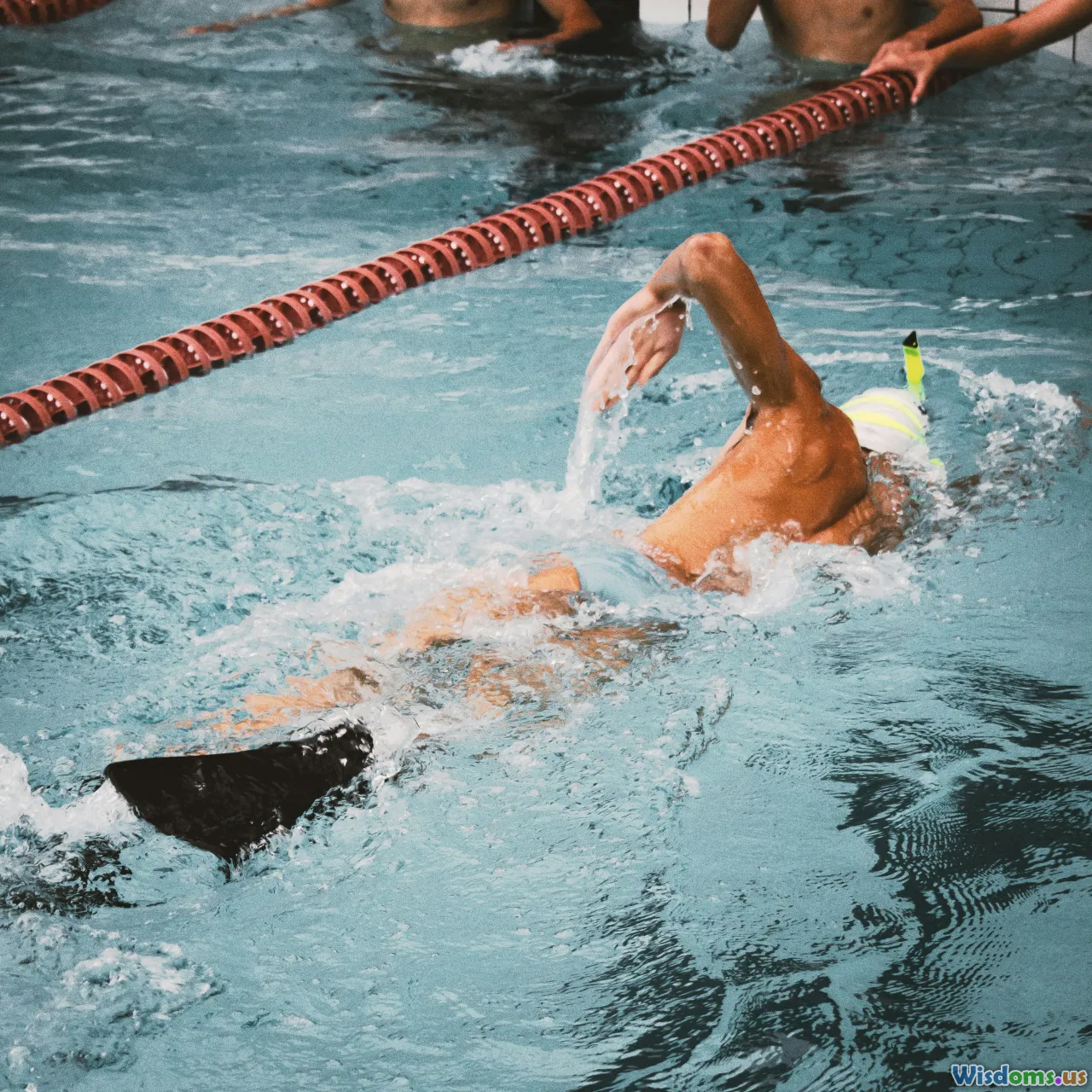
While resistance bands are user-friendly and highly adaptable, maximizing results requires a thoughtful approach. Here are essential tips for swimmers looking to make the most of their dryland sessions:
- Warm Up First: Pre-activate shoulder and leg muscles with 5–10 minutes of light aerobic activity and dynamic stretching before starting band exercises.
- Use Progressive Resistance: As you adapt, gradually increase band tension to continue challenging your muscles.
- Maintain Technique: Proper form should always precede increased resistance or speed. Filming your form or working with a coach yields ongoing improvements.
- Balance the Body: Train both sides of your body evenly to prevent overuse injuries and compensatory patterns. If you feel weak on one side, start your sets there.
- Prioritize Recovery: Banded work can be deceivingly taxing. Allow ample recovery, and schedule mobility sessions each week to counteract tightness.
Sample Dryland Routine for Swimmers

Implementing resistance band exercises is straightforward; integrating them systematically yields even greater benefits. Here's a sample weekly dryland routine for competitive or fitness swimmers:
| Exercise | Monday | Wednesday | Friday |
|---|---|---|---|
| Band Pull-Aparts | ✓ | ✓ | ✓ |
| Single-Arm Lat Pulldown | ✓ | ✓ | |
| Overhead Band Extensions | ✓ | ✓ | |
| Band Squats | ✓ | ✓ | ✓ |
| Rotational Band Press | ✓ | ✓ |
Suggested structure: Perform each exercise for recommended sets/reps, moving through the circuit with 45–60 seconds rest between moves.
Advanced Add-Ons: If you swim year-round, switch up your band workouts each quarter—using new exercises, different grip positions, and wider stances to add variety and prevent plateaus.
Resistance Bands: A Secret Weapon for Swimmers

Versatile, cost-effective, and portable, resistance bands let swimmers train anywhere—the pool deck, hotel room, or living room. More than just a supplement, band-based dryland work directly strengthens the muscle groups responsible for propulsion, stabilization, and injury prevention in every stroke.
Whether you’re eyeing a personal best or simply staying healthy off-season, regularly performing the five resistance band exercises detailed above sets a foundation for streamlined, efficient, and safe swimming. So grab your bands, carve out ten extra minutes a few times a week, and watch your power and performance ripple through the water.
Rate the Post
User Reviews
Other posts in Strength Training
Popular Posts











